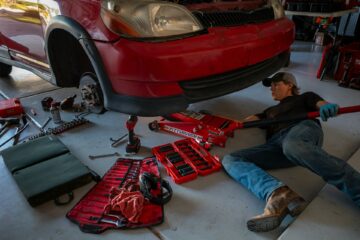Commercial truck drivers are the backbone of the nation’s logistics network, keeping goods, food, and critical materials moving across thousands of miles each day. The physical and mental demands of this work, however, are significant. Long hours on the road, repetitive motions, and extended periods of sitting all take a toll. To create a more sustainable and efficient industry, it’s essential to focus on one key area that often gets overlooked — ergonomics.
Ergonomic design and support systems are transforming the trucking profession by improving comfort, safety, and overall performance. Whether you’re an independent driver, fleet operator, or logistics manager, understanding the value of ergonomic solutions can make a lasting difference in health and productivity.
The Risks of Poor Posture and Work Conditions
Driving for long hours without proper support can lead to chronic pain, fatigue, and long-term injuries. OSHA identifies truck driving as one of the occupations most at risk for musculoskeletal disorders — injuries that can cause stiffness, reduced mobility, and persistent discomfort. Over time, these physical challenges can also impact mental health, contributing to stress and depression among drivers.
Addressing these concerns begins with posture and seating position. Drivers should focus on maintaining neutral spine alignment, adjusting seats to reduce forward leaning, and avoiding habits like slouching or overreaching. Simple posture corrections can significantly improve comfort and reduce the likelihood of injury.
Ergonomic Upgrades That Improve Comfort and Safety
Adopting ergonomic equipment doesn’t just protect against injuries — it directly enhances focus, alertness, and safety on the road. A well-supported driver is a more attentive driver. Even modest cab upgrades can make a big difference in day-to-day performance.
- Supportive seating: Invest in seats with adjustable lumbar support, cushioning, and armrests designed to reduce lower back and shoulder strain.
- Ergonomic steering systems: Adjustable steering columns and properly sized steering wheels help minimize wrist and shoulder tension.
- Smart cabin design: Advanced dashboards and telematics reduce unnecessary movement and allow drivers to access key information with minimal distraction.
- Custom adjustments: Every driver’s body is different. Highly adjustable seats and accessories ensure proper alignment and individualized comfort throughout the workday.
These improvements combine to create a more ergonomic workspace — one that minimizes strain, improves posture, and extends a driver’s endurance during long hauls.
Maintenance: The Mechanical Side of Ergonomics
Ergonomics extends beyond seating and cabin design. The mechanical condition of the truck itself also affects driver comfort and fatigue. Routine maintenance — such as replacing brake components, checking power steering systems, and maintaining smooth suspension — plays a key role in reducing vibration and improving control. Reliable equipment not only supports physical comfort but also boosts confidence and concentration behind the wheel.
Building a Safer, More Sustainable Industry
By investing in ergonomic technology and regular equipment upkeep, fleets can reduce injury rates, enhance safety, and extend the careers of experienced drivers. A focus on comfort doesn’t just benefit individual drivers — it supports the broader goal of building a resilient, efficient, and sustainable trucking industry.
In the end, ergonomics isn’t a luxury; it’s a necessity for driver well-being and operational success. When comfort and safety come first, efficiency naturally follows — mile after mile.
Curious to dive deeper into the role of ergonomic support for truck drivers? Explore the detailed resource from Fitzgerald, a trucker parts supplier, for additional insights and guidance.












